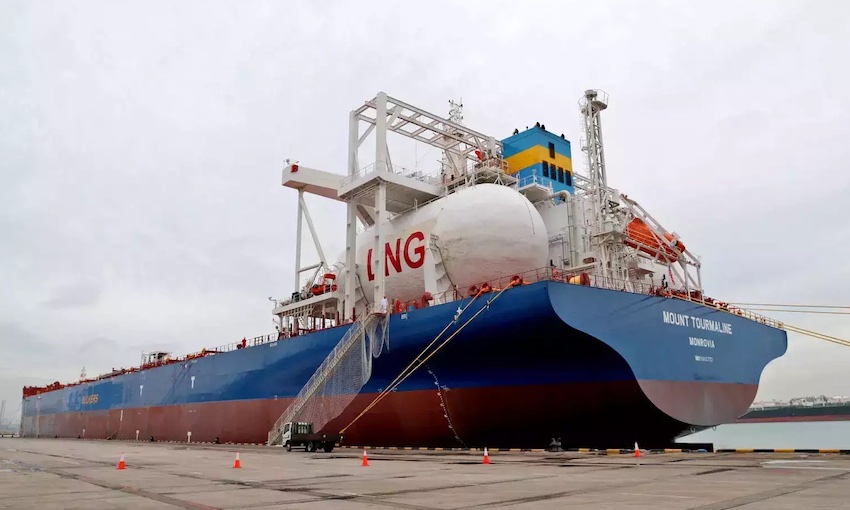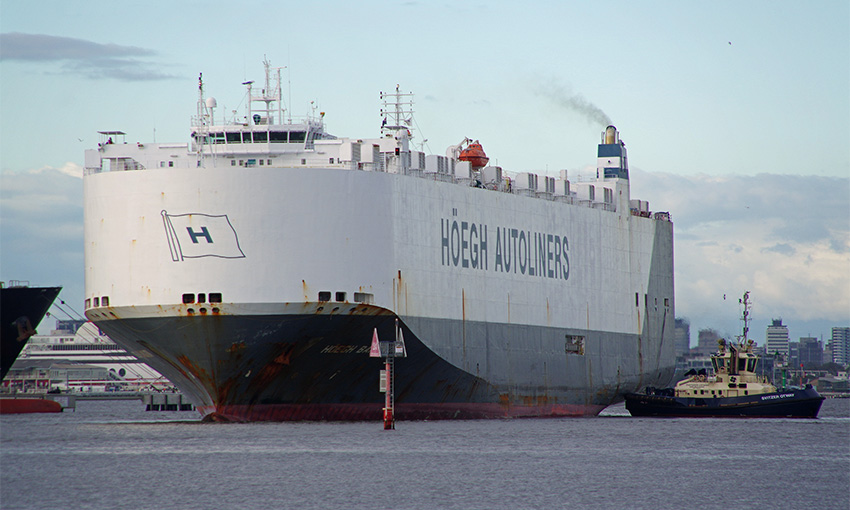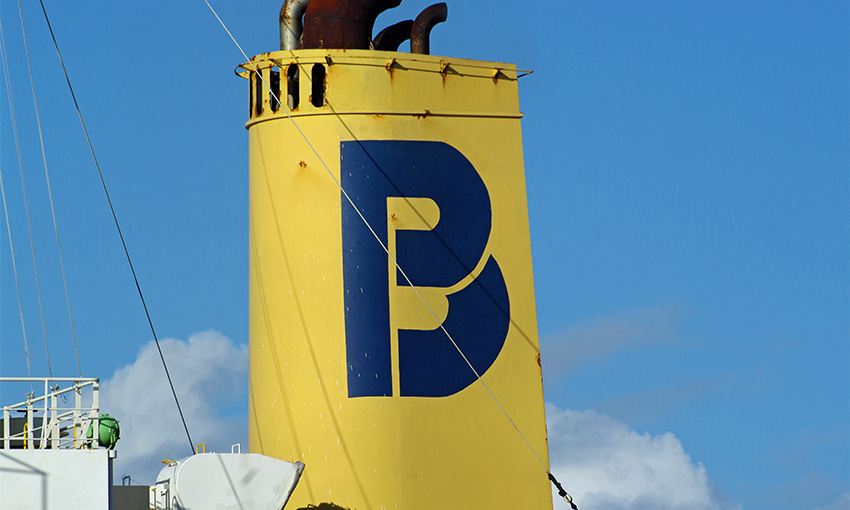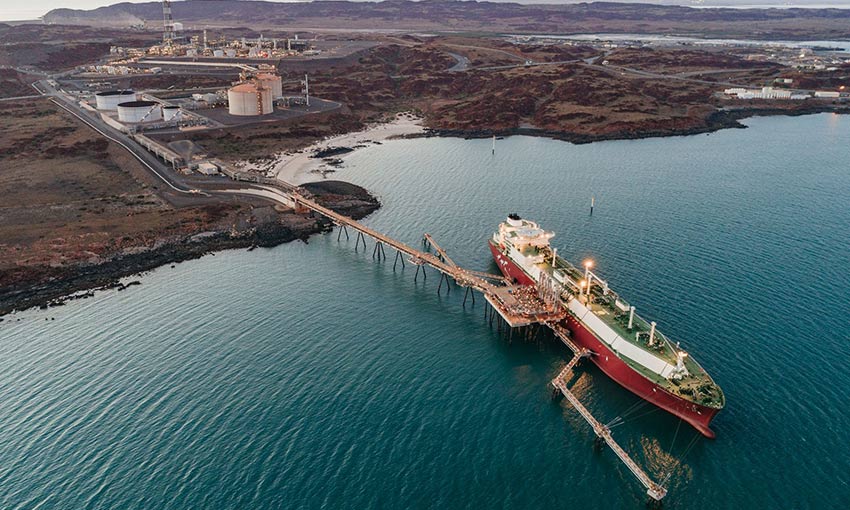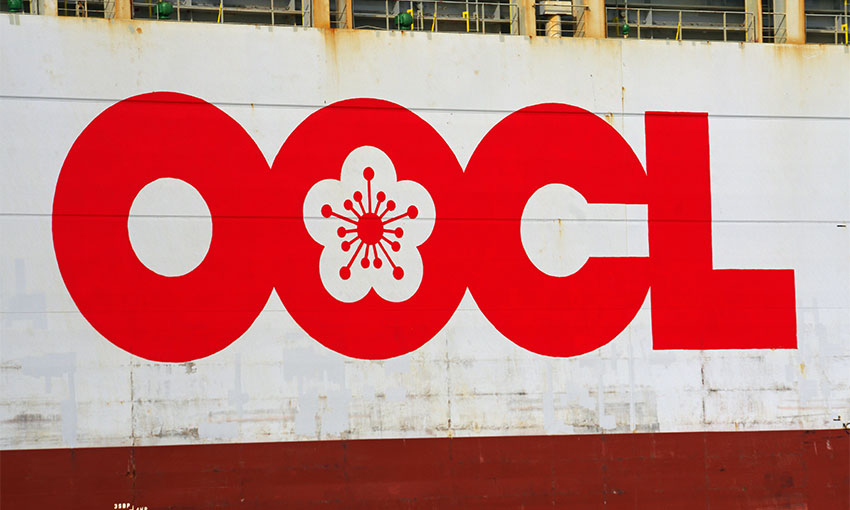AUSTRALIAN mining giant BHP, has provided a maritime trade update as part of its economic and commodity outlook for the FY half year.
In the dry bulk segment, immediately prior to the pandemic, the industry was actively transitioning from an era of austerity towards a heightened focus on sustainability.
While to some extent COVID–19 has interrupted the idea of a clean break from the recent past, the trend towards sustainability is inexorable, according to BHP.
One of the key signposts is the upcoming IMO mandated technical and operational efficiency measures coming into force in 2023, and the mandate to achieve net zero emissions by 2050 (or earlier).
BHP has awarded the world’s first LNG–fuelled bulk carrier tender, with the Mount Tourmaline officially welcomed at Jurong Port in Singapore in early February 2022.
“We anticipate that our LNG breakthrough will catalyse investments along the value chain in advance of the major fleet replacement that is due in the mid–2020s,” BHP said.
“LNG of course, is a transitional technological option for shipping, and the green end–state will be different.
“As we seek to anticipate that end–state, in calendar 2021 we concluded (along with partners) a successful trial voyage of a sustainable biofuel vessel bunkered in Singapore.”
The company has been in discussions with biofuel providers and other members of the value chain to gain a clearer picture on sourcing and using biofuels in South East Asia.
BHP is also partnering with DNV to improve the measurement of its scope 3 footprint, and is a founding member of the Global Centre for Maritime Decarbonisation in Singapore.
“Our decarbonisation initiatives, such as these, have undeniable ‘public good’ characteristics for the maritime industry as a whole,” BHP said.
Turning to the recent history of the bulk freight market, the key C5 WA–China route averaged $14.20/t in the first half of financial year 2022, a 43% increase over the second half of financial 2021. That is also 94% higher than the average achieved across the three calendar years prior to COVID–19.
In the full calendar year 2021, both C5 and C3 (Brazil–China) increased by around 80% over calendar 2020. C5 averaged $12.07/t and C3 (Brazil–China) $26.74/t in calendar year 2021, with highs for the period being $23.60/t and $50/t respectively.
“This substantial move higher in rates reflects the impact of respectable growth in the bulk trade, but it is arguably developments on the supply side that have had more influence,” BHP said.
Available Capesize tonnage has been tight, with modest growth in the fleet “nameplate” discounted by a drop in “effective” capacity due to lengthy vessel queues in some locations (COVID–19 issues and controls in many jurisdictions, but also Chinese import policies in the coal trade).
The drop in effective capacity has been most pronounced in the container segment of maritime, but the Capesize fleet has also been heavily constrained at times, according to BHP. Capesize orders are currently equivalent to just 7% of the existing fleet, while the same metric for containers is 23%.
According to Maritime Strategies International, Capesize fleet growth is estimated to have been around 13 million dwt (mdwt) in calendar 2021, with around +18 mdwt in deliveries offset by approximately –5 mdwt in deletions.
Deletions basically ground to a halt under the favourable conditions for shipowners that emerged in the second half of calendar 2021. Shipowners are incentivised to keep their older vessels on the water a little longer while profitable rates are on offer.
On the supply side of the sector, BHP anticipates fleet growth will slow sharply across calendar 2022 and 2023.
In the container market, the logic is similar but amplified, with a thin delivery schedule projected for calendar 2022 and a higher initial rate of congestion to unwind (about 3–5 percentage points above average in containers versus 1–2 percentage points in Capesize).
Some relief on the nameplate tonnage side is expected in calendar 2023, with an increase in deliveries anticipated.
“As we move into the middle and then latter half of the current decade, an intense period of dry bulk fleet replacement is scheduled to occur,” BHP said.
“This is the ‘demographic shadow’ of the shipbuilding boom that coincided with the China–fuelled commodity super cycle.”
“This replacement wave offers a unique opportunity to dramatically alter the technological and environmental profile of the dry bulk fleet within a little over half a decade.”
BHP believes if the industry “gets this right”, the task of achieving the IMO’s goal of halving shipping emissions by 2050 may not seem “as it does today”.

